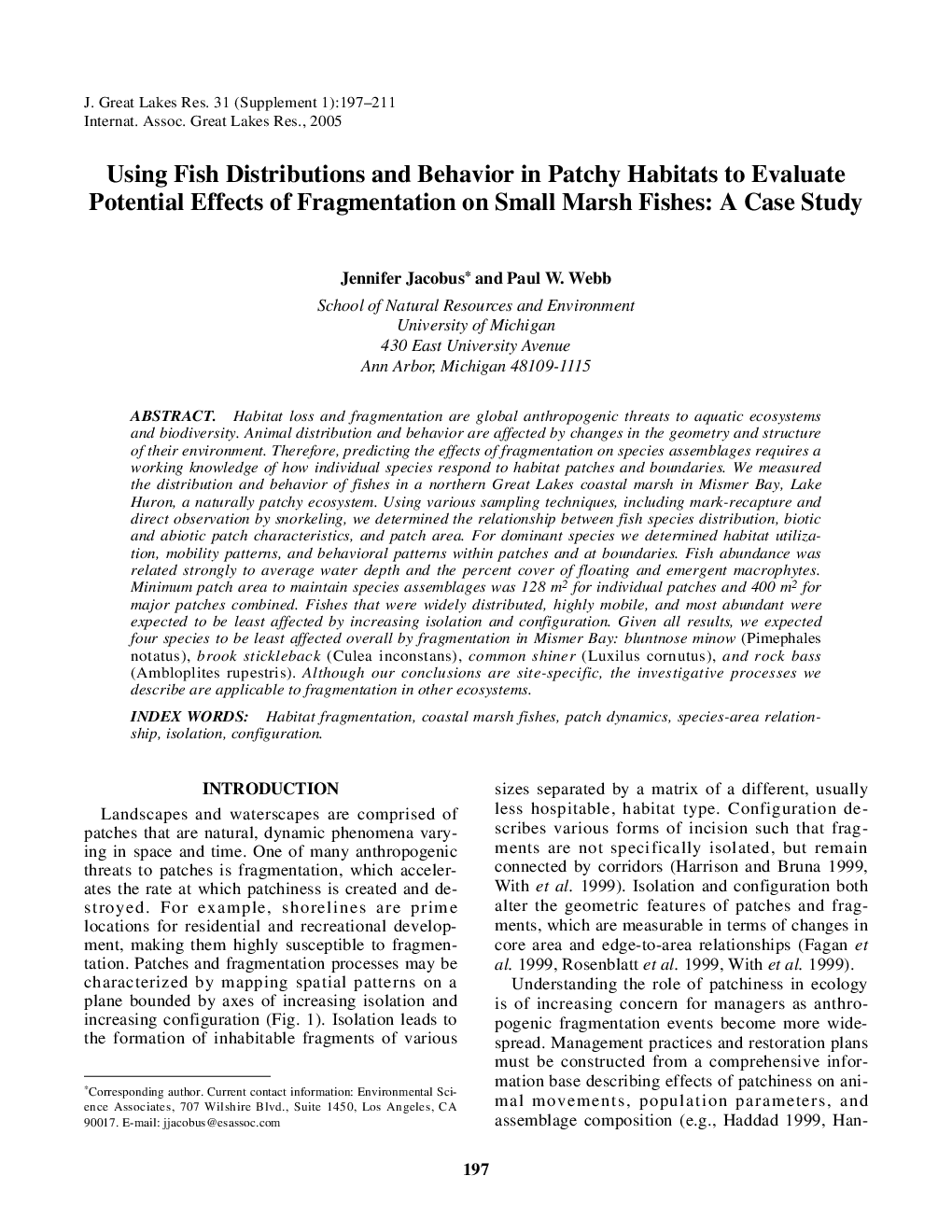| Article ID | Journal | Published Year | Pages | File Type |
|---|---|---|---|---|
| 9450288 | Journal of Great Lakes Research | 2005 | 15 Pages |
Abstract
Habitat loss and fragmentation are global anthropogenic threats to aquatic ecosystems and biodiversity. Animal distribution and behavior are affected by changes in the geometry and structure of their environment. Therefore, predicting the effects of fragmentation on species assemblages requires a working knowledge of how individual species respond to habitat patches and boundaries. We measured the distribution and behavior of fishes in a northern Great Lakes coastal marsh in Mismer Bay, Lake Huron, a naturally patchy ecosystem. Using various sampling techniques, including mark-recapture and direct observation by snorkeling, we determined the relationship between fish species distribution, biotic and abiotic patch characteristics, and patch area. For dominant species we determined habitat utilization, mobility patterns, and behavioral patterns within patches and at boundaries. Fish abundance was related strongly to average water depth and the percent cover of floating and emergent macrophytes. Minimum patch area to maintain species assemblages was 128 m2 for individual patches and 400 m2 for major patches combined. Fishes that were widely distributed, highly mobile, and most abundant were expected to be least affected by increasing isolation and configuration. Given all results, we expected four species to be least affected overall by fragmentation in Mismer Bay: bluntnose minow (Pimephales notatus), brook stickleback (Culea inconstans), common shiner (Luxilus cornutus), and rock bass (Ambloplites rupestris). Although our conclusions are site-specific, the investigative processes we describe are applicable to fragmentation in other ecosystems.
Related Topics
Physical Sciences and Engineering
Earth and Planetary Sciences
Earth and Planetary Sciences (General)
Authors
Jennifer Jacobus, Paul W. Webb,
